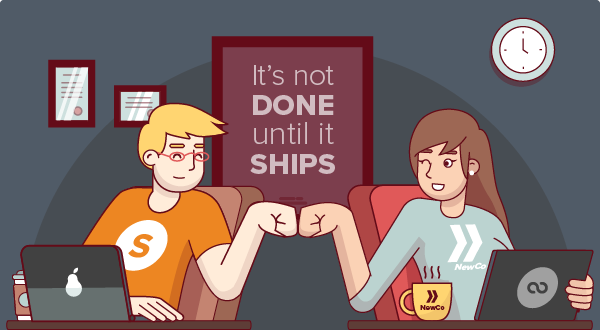Ryan Rutan

As a startup, customer acquisition is essential for success. It requires careful planning and execution to ensure that your efforts are successful and cost-effective. In this introduction, we will explore key topics such as building relationships with potential customers, tracking success metrics, leveraging digital marketing channels, testing different campaigns, and more. With the right strategies in place, customer acquisition can be an exciting opportunity for startups to grow their customer base and expand their business.

Overview of customer acquisition for startups
Why Customer Acquisition Matters for Startups
Customer acquisition for startups is an incredibly important process that can mean the difference between success and failure. Acquiring customers is the main way startups generate revenue, so it's critical to develop customer acquisition strategies that are effective and efficient.
The customer acquisition process typically includes customer segmentation, customer intelligence gathering, customer engagement, customer conversion, and customer retention.
When it comes to customer segmentation, startups should focus on customer demographics, customer psychographics, and customer behaviors. This helps to identify potential customer segments that your product or service may appeal to.
The next step is customer intelligence gathering, which involves researching customers in order to better understand their needs and preferences. This will help you to develop customer engagement strategies that are more effective.
For customer engagement, it's important to build relationships with potential customers through a variety of techniques such as email marketing, social media campaigns, and content marketing. This helps to create familiarity and trust in your brand and increase customer conversion rate.
The fourth step is customer conversion – turning potential customers into actual customers. This is the point in customer acquisition where startups should ensure they are providing an exceptional customer experience and making it easy for customers to make a purchase.
Finally, customer retention is essential for customer success. Once you've acquired your customer, you need to keep them engaged and satisfied in order to retain them long-term. This includes customer service, customer experience, customer feedback, and customer loyalty programs.
The importance of building relationships with customers
For startups, customer acquisition is all about relationships. You need to build trust with potential customers by understanding their needs, offering valuable solutions, and providing an exceptional customer experience. This process may be time-consuming and challenging but it will pay off in the long run as a customer who has had a positive experience is likely to do business again–and even recommend your services to others.
To build customer relationships, it helps to put yourself in their shoes and think about their experiences with your company. What would they need or expect from you? How can you make sure that customer service is seamless and customer satisfaction is high? Getting feedback from customers on a regular basis will give you valuable insight into how to better meet customer needs.

Tracking success metrics to measure customer acquisition
One of the most important steps in customer acquisition is tracking success metrics. You need to know which tactics are working and which ones can be improved upon or abandoned entirely. To track customer acquisitions effectively, it's important to have specific goals that you can measure against. For example, you might set a goal of acquiring 500 new customers within the next three months or increasing customer retention by 10 percent in the next quarter.
Once you've established your customer acquisition goals, you need to track the right metrics such as customer lifetime value (LTV), customer acquisition cost (CAC), customer churn rate, customer satisfaction, customer engagement, and customer conversion. Tracking these metrics will help you better understand what's working and determine the best way to optimize your customer acquisition efforts.
At the same time, it's also important to track how much you're spending to acquire customers. This includes marketing costs as well as customer service costs. By tracking customer acquisition costs, you can identify which customer acquisition tactics are the most cost-effective and adjust your strategy accordingly.
By keeping a close eye on customer acquisition metrics, you will be able to make informed decisions about how to best optimize customer acquisition for your startup. This will help ensure that your customer acquisition efforts are successful and cost-effective.
How to Track Customer Acquisition Metrics
Tracking customer acquisition success metrics is a vital part of any customer acquisition strategy and should not be overlooked. Knowing how to accurately track customer acquisition metrics is essential for identifying trends, optimizing campaigns, and making informed decisions about customer acquisition strategies.
The first step in tracking customer acquisition success metrics is to establish clear goals and objectives. This includes deciding on customer acquisition goals such as customer lifetime value, customer retention rate, customer acquisition cost (CAC), and customer churn rate.
Next, you should establish a tracking system that allows you to measure your success metrics against your goals. This includes setting up basic analytics tools such as Google Analytics or Kissmetrics to track website visitors, creating customer surveys to measure customer satisfaction, and using customer service software like Freshworks <Link to freshworks benefits> to track customer interactions.
Once you have established a tracking system, the next step is to analyze your customer acquisition success metrics on an ongoing basis. This includes measuring customer acquisition costs against customer lifetime value, evaluating customer retention rates over time, and analyzing customer churn rates. This will give you a better understanding of customer acquisition trends and help you identify potential areas for improvement or optimization.
By tracking customer acquisition success metrics on an ongoing basis, you can gain valuable insights into customer behavior and make informed decisions about customer acquisition strategies. In addition, tracking customer acquisition success metrics can help startups determine when to pivot their customer acquisition strategy to ensure maximum customer engagement and return on investment. When customer acquisition success metrics are tracked correctly, startups can maximize customer acquisition efforts for greater success.

Some of the Key Digital Marketing Channels for Startups
There are several digital marketing channels that can be effective for startups. Some of the key channels to consider include:
Website: A strong, well-designed website is essential for any startup. It serves as a central hub for all of your marketing efforts and should provide valuable information about your products or services, as well as a clear call to action for visitors to take.
Email marketing: Email marketing can be an effective way to reach and engage with potential customers. It also has one of the highest conversion rates, delivering a great customer acquisition cost. Use segmentation and personalization techniques to create targeted, relevant emails that are more likely to be opened and acted upon.
Social media: Social media platforms such as Facebook, Twitter, and LinkedIn provide predictable customer acquisition costs and a way to reach and engage with new customers. To further improve customer acquisition cost, be sure to identify the platforms where your target audience is ALREADY most active and create a presence there.
Content marketing: Creating high-quality, relevant content that addresses the needs and interests of your target audience can help to attract and engage new customers. Consider implementing a content marketing strategy that includes a blog, whitepapers, ebooks, and other types of content.
Paid advertising: Paid advertising, such as Google AdWords or Facebook Ads, can be an effective way to reach a targeted audience. However, it's important to carefully track the performance of your ads and optimize them to ensure they are cost-effective.
Influencer marketing: Partnering with influencers or industry experts can help to build credibility and reach a wider audience. Consider reaching out to influencers who align with your brand and values to see if they would be interested in collaborating.
Referral marketing: Encouraging current customers to refer friends and colleagues can be an effective way to acquire new customers. Consider implementing a referral program or offering incentives for referrals.
These are just some of the key customer acquisition channels for startups. With a successful customer acquisition strategy, startups can leverage these channels to reach their customer base and drive revenue growth. Check out our channel-specific customer acquisition guides (linked at the end of this article) for more channels, and help with executing each of them!

How Can Startups Test Customer Acquisition Channels and Campaigns effectively?
Testing customer acquisition channels and campaigns are an important aspect of a startup's marketing strategy and customer acquisition plan, as it helps to identify the most effective methods for attracting and retaining customers. Here are some tips for testing customer acquisition channels and campaigns effectively to create a successful customer acquisition strategy:
Set clear goals: Define specific goals for your testing, such as increasing website traffic, improving lead generation, a specific customer acquisition cost or increasing sales. This will help you to focus your efforts and measure the success of your tests. Using the resulting data allows you to optimize your customer acquisition strategy to acquire customers.
Choose the right channels: Experiment with a variety of channels to reach your target audience, including social media, paid marketing campaigns, email marketing, content marketing, and referral programs.
Use A/B testing: A/B testing involves comparing two versions of a campaign or channel to see which performs better. For example, you could test two different subject lines in an email campaign to see which one has a higher open rate.
Test small and iterate: Start with small, focused tests and gradually expand your testing as you gather data and insights. This will allow you to quickly identify and implement successful strategies while minimizing risk.
Analyze and optimize: Use tools such as Google Analytics to track the performance of your campaign and customer acquisition channel, and use the data you gather to optimize your efforts and improve your results.
By following these steps, startups can effectively test customer acquisition channels and campaigns to identify the most effective methods for attracting and retaining customers.
Detailed Acquisition Testing Example: Email Subject Line Testing
Subject line testing is a technique used by email marketers to improve the performance of their campaigns. The goal of subject line testing is to identify the most effective subject line for a given email campaign, based on metrics such as open rate, click-through rate, and conversion rate.
Here are some steps for using subject line testing to improve email marketing:
1 - Choose a hypothesis:
Determine what you want to test with your subject line. For example, you may want to test whether a subject line with a personalization element has a higher open rate than a subject line without personalization.
2 - Create multiple versions of your subject line:
Create several variations of your subject line, each with a slightly different focus or wording.
3- Send the emails:
Use your email marketing platform to send emails to a small group of recipients. Be sure to use a consistent email body and call-to-action across all versions.
Measure the results:
Track the performance of each subject line using metrics such as open rate, click-through rate, and conversion rate.
Analyze the results:
Compare the performance of each subject line and determine which version performed the best.
Use the winning subject line:
Once you have identified the most effective subject line, use it for future email campaigns to improve their performance.
It's important to note that subject line testing is just one aspect of email marketing, and it's important to consider other factors such as the timing and frequency of your emails, the relevance of the content, and the overall design of the email when striving to improve the effectiveness of your campaigns.
Detailed Customer Acquisition Example: Landing Page Testing
Landing page testing is a technique used to optimize the performance of a landing page, with the goal of improving lead conversion rates. Here are some steps for using landing page testing to improve lead conversion rates:
Set clear goals: Determine what you want to test on your landing page and what you hope to achieve with the test. For example, you may want to test the placement of a call-to-action button to see if it increases the number of form submissions.
Create multiple versions of your landing page: Create several variations of your landing page, each with a slightly different design or layout.
Use A/B testing: A/B testing involves comparing two versions of a landing page to see which performs better. Use a tool such as Google Optimize to conduct the test and track the results.
Measure the results: Use metrics such as conversion rate, bounce rate, and average time on the page to track the performance of each landing page version.
Analyze the results: Compare the performance of each landing page and determine which version performed the best.
Use the winning landing page: Once you have identified the most effective landing page, use it as the basis for future campaigns to improve lead conversion rates.
It's important to note that landing page testing is just one aspect of lead generation, and it's important to consider other factors such as the overall marketing strategy, the relevance of the offer, and the quality of the lead capture form when striving to improve lead conversion rates.

Tips on how to make customer acquisition cost-effective and successful
There are several factors that can contribute to customer acquisition being cost-effective and successful for a startup. Some of the key factors include:
Clearly defining the target audience: Identifying and clearly defining the target audience is crucial for customer acquisition to be cost-effective and successful. By focusing on the right audience, a startup can more effectively allocate its resources and reach potential customers with the right message at the right time.
Using data to inform marketing decisions: Leveraging data such as website analytics, customer feedback, and industry research can help a startup to better understand its customer's needs and preferences, and to identify the most effective channels and tactics for reaching them.
Testing and optimizing marketing campaigns: Testing and optimizing marketing campaigns can help a startup to identify the most effective strategies and allocate its resources more efficiently. A/B testing and other optimization techniques can help a startup to continuously improve the performance of its campaigns and channels.
Utilizing social media: Social media platforms can be a cost-effective way for a startup to reach and engage with potential customers. Identifying the social media platforms where the target audience is most active and creating a presence there can help a startup to reach a wider audience and generate leads.
Developing a content marketing strategy: Creating high-quality, relevant content that addresses the needs and interests of the target audience can help a startup to attract and engage potential customers. Developing a content calendar and implementing a content marketing strategy can help a startup to generate leads and build relationships with potential customers.
Considering paid advertising: Paid advertising, such as Google AdWords or Facebook Ads, can be an effective way for a startup to reach a targeted audience. However, it's important to carefully track the performance of paid ads and optimize them to ensure they are cost-effective.
Utilizing email marketing: Email marketing can be an effective way for a startup to reach and engage with potential customers. By using segmentation and personalization techniques, a startup can create targeted, relevant emails that are more likely to be opened and acted upon.
Fostering customer loyalty: Focusing on customer retention can be a cost-effective way for a startup to grow its business. Implementing loyalty programs and other retention strategies can help a startup to encourage repeat business and word-of-mouth referrals.

Summary of Customer Acquisition for Startups
Customer acquisition is an essential part of any startup's growth strategy. By clearly defining the target customer, leveraging data to inform marketing decisions, testing and optimizing campaigns, utilizing social media and content marketing strategies, considering paid advertising options, using email marketing tactics, and fostering customer loyalty; startups can create effective customer acquisition plans that are cost-effective while achieving successful results. With these tips in mind, you’ll be well on your way to acquiring more customers for your business!
Find this article helpful?
This is just a small sample! Register to unlock our in-depth courses, hundreds of video courses, and a library of playbooks and articles to grow your startup fast. Let us Let us show you!
Submission confirms agreement to our Terms of Service and Privacy Policy.
Already a member? Login
Start a Membership to join the discussion.
Already a member? Login
Networking and marketing are essential for startups to attract customers. Utilize social media, build relationships and create a unique value proposition that resonates with your target audience.